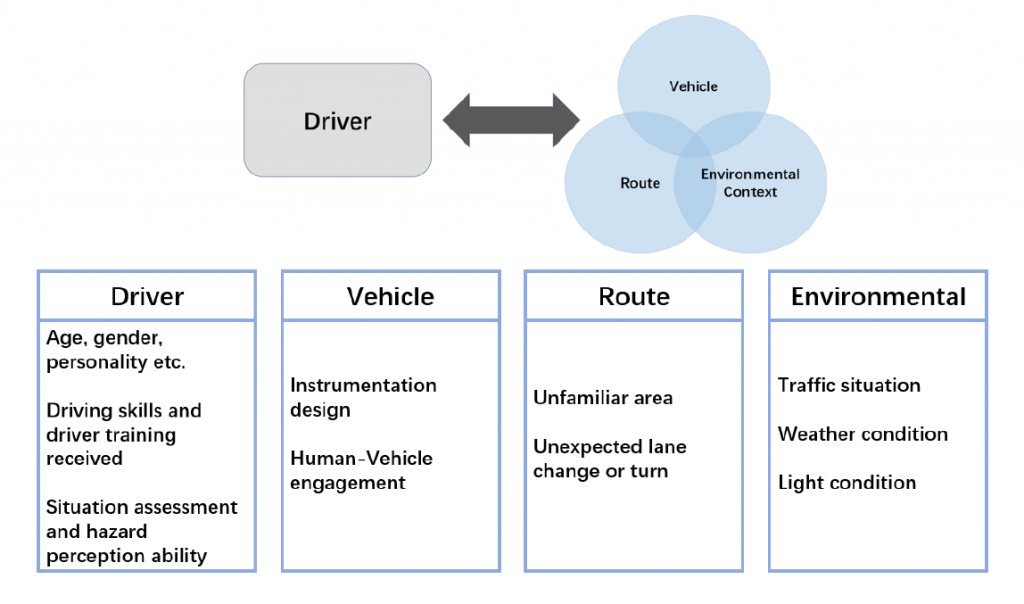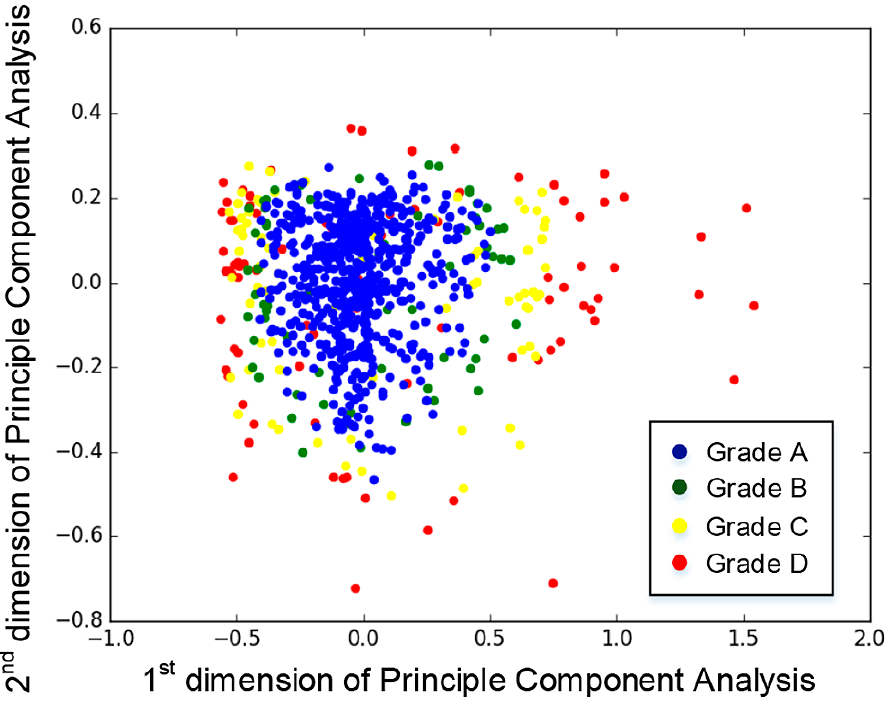
This can be referred to across a range of perspectives when talking about “Driver Experience.” Here, we summarize the scope of driver knowledge/familiarity/experience into four areas. Which are:
- The driver it self, such as how many years of driving experience does the driver has, or what kind of vehicle (i.e., sedan, truck, Sport Utility Vehicle (SUV), etc.) does the driver use daily in their commute, which could affect their driving performance assessment;
- Vehicle, since the control response in an unfamiliar vehicle could be different than expected by the driver. The instrumentation panel and ergonomic design are factors that may also have influence;
- Route, as more workload is required when navigating through unfamiliar areas, which could cause potential increased risk;
- Environmental conditions/contexts such as traffic, weather, and light.

Since it is very subjective to evaluate a driver’s driving performance, one approach is to identify the driving event and then quantify if there is any deviation from the expected or “neutral” behavior. A clustering-outlier detection grading method using the Support Vector Machine model is therefore proposed. Grade A samples are closest to the cluster centroid and represent the best driving events. Grade D samples are the outermost anomalies representing the least-rated events. A series of four experiments were conducted to establish an understanding of driver experience assessment as well as vehicle familiarity for driving performance scoring.
